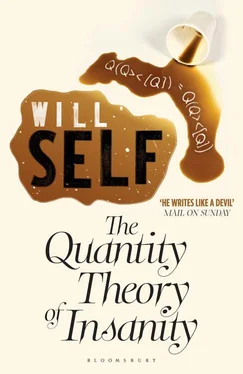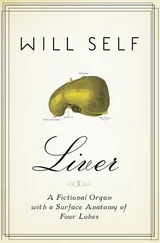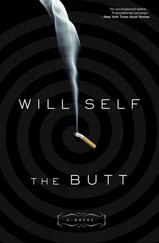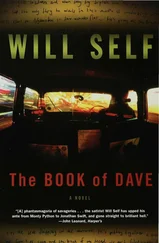Exactly a week later my wife and I stood outside 47 Fernwood Crescent. The house was lit up in a cheery sort of way, the curtains were pulled back from the windows and inside everything looked spick and span. Number 47 was a more or less typical Purley residence, semi-detached with a corrugated car port to the side of the house in lieu of the garage. Like the other residents of Fernwood Crescent Janner had taken the trouble to paint the exterior woodwork and drainpipes in an individual colour, in his case bright green. The bell ding-donged under my finger and the green door swung open.
‘You must be Jane?’
‘That’s right, come in. I’ve heard such a lot about you.’
What I first noticed about her was her accent, remarkably flat and colourless — it was pure South London, right down to the slightly nasal character. I can’t say that I paid any attention at all to what she looked like; in this respect Janner’s description of her was entirely accurate. She was like someone that you pass in a crowd, a face that you momentarily focus on and then forget for ever. As for her brother David, who got up from the sofa to greet us, there was an obvious family resemblance.
We hung up our coats and sat down in a rough semi-circle around the redundant fireplace, and exchanged the conversational inanities which signify ‘getting-to-know-one-another’. After a while Janner came in. ‘Sorry, I didn’t hear you arrive. I’ve just been in the garden doing a little pottering. Would anyone like a drink?’ He took orders and repaired to the kitchen. By the time he returned I was deeply embroiled with David in a discussion of the relative merits of the Dewey decimal system, as against other methods of cataloguing. Janner caught the tail-end of something we were saying. ‘I see David’s caught you already,’ he laughed. ‘He won’t let up now, he’s a demon for classification since he started work at the library. Why, he’s even colour-coded the spice jars in the kitchen.’ We all laughed at this.
What Janner said was true. David wouldn’t let go of me all evening. He was an irritating conversationalist who had the habit of not only repeating everything that you said, but also ending your sentences for you, so that a typical exchange went something like this:
‘Yes, we try and maintain a microfiche …’
‘Catalogue at the school for the older students — maintain a microfiche catalogue for the older students, hmn …’
I would have felt like hitting David if it wasn’t for the fact that he was so affable and ingratiating. Dinner was unremarkable. We had some kind of casseroled meat with vegetables, but I couldn’t say what kind of meat it was.
David’s pressing interest in taxonomy cast a deep sense of enervation over me. I nearly slumped down on my chair during the dessert course and once or twice the vinyl did give off a squawk. My wife and Jane were deep in conversation about the Local Education Authority and Janner had disappeared upstairs to change the baby’s nappy. I excused myself from David and tiptoed after him.
I found him in a little room under the eaves which had been tricked out as a nursery. He was deftly manipulating the Wet Ones, as a man born to it. The baby was a nondescript little thing with putty-coloured skin and a whorl of indeterminate mousey hair on its little scalp.
‘Takes after its mother,’ said Janner grasping two tiny feet in his one bony hand. ‘Can’t say I’m sorry. Wouldn’t wish my face on any child.’
‘Janner, what are you going to do?’
‘Do? Do about what?’
‘About Jane, about David, about the Ur-Bororo.’
‘Why, nothing, nothing at all.’ He fastened the sticky-backed tapes and plunked the baby back in its cot. It stared up at us with blank, unfocused, incurious eyes.
‘But Janner, you’re a scientist, you have a duty to tell. Is it the Lurie Foundation, have they got some kind of a hold on you?’
‘Nothing of the sort. Of course I could publish if I wanted to, but for some reason the whole subject of the Ur-Bororo leaves me cold, I just can’t get worked up about it. I don’t think the world would be any the wiser for my insights.’
Soon afterwards we took our leave. All the way home my wife talked about Jane. They seemed to have really hit it off together. I was silent, entirely preoccupied by my thoughts about Janner and the Ur-Bororo.
Our two families became quite close during that autumn. I should say that we saw each other at least once a fortnight, sometimes more. I even grew to appreciate David. There was something admirable about his dogged adherence to the most simple categories he could latch on to. As for Janner, I raised the subject of the Ur-Bororo with him several more times but he was completely unconcerned. He was in the process of becoming quite a minor celebrity — the sort of pop academic the general public takes up from time to time and turns into a television personality. His book linking the observation of swirling laundry to traditional Buddhist meditation surprisingly had become a hit and he was in the process of negotiating serialisation with the colour supplements.
As for me, I went on teaching, playing volleyball and asking recalcitrant pupils the names of power stations. The lagging which had for a brief period been removed from my mind came back — together with new, improved, cavity-wall insulation.
The Quantity Theory of Insanity
Denver, Colorado
A depressing day here at the special interdisciplinary conference. I suppose that as the author of the theory that has generated so much academic activity I should feel a certain proprietorial glee at the sight of hundreds of psychologists, sociologists, social scientists and other less mainstream academics running hither and thither, talking, disputing, gesturing, debating and conferring. Instead I feel only depressed and alienated from the great industry of thought I myself have engineered. And added to that I think the low quality of the celluloid they’ve used for the name badges betrays the fact that the department simply hasn’t allocated a big enough budget.
I spent the morning in the main auditorium of the university giving my address to the assembled conferees. Dagglebert, against my expressed wishes, had put together some kind of video display or slide show to accompany my introductory lecture, ‘Some Aspects of the Quantity Theory of Insanity’. Sadly, even though Dagglebert has irrepressible faith in visual aids, he has absolutely no spatial awareness whatsoever. I kept looking up and realising that flow charts were running over my face, and at one stage I looked down to discover that my stomach was neatly encompassed by a Venn diagram section tagged ‘Manic Depressives in Coventry 1977–79’.
Despite these and other drawbacks, it went well. Several hundred hirsute men and women sat on the edge of their seats for a full three hours while I went over the principal aspects of the theory. If the truth be told I could have gargled and they would have been just as attentive. I’ve now reached that rarefied position in academia where I have the cachet of a lecturing Miles Davis. I could have allowed Dagglebert to project slides for three hours and then sauntered on for five minutes of disjointed and facile muttering — and still I would have been vigorously applauded.
As it was I declined to cash in on the credulousness of my audience. For once I would attempt the truth. I would take a serious stab at stopping the feverish growth of an industry I myself was responsible for helping to create. I would demystify the Quantity Theory myth, and in the process take a few clay idols down with me.
Accordingly, I dealt with the subject personally as well as historically. As with all great theories I felt that it was especially important for an academic audience to understand the personal dimension, the essential humanity of the origin of such an idea. But it didn’t work. Once one has a certain kind of academic status, any statement that you make, if it is couched in the language of your discipline, no matter how critical, how searching, is seen only as an embellishment, another layer of crystalline accretion to the stalactite. To break it off at the root, one’s language would have to be brutal, uncompromising, emotional, non-technical.
Читать дальше












